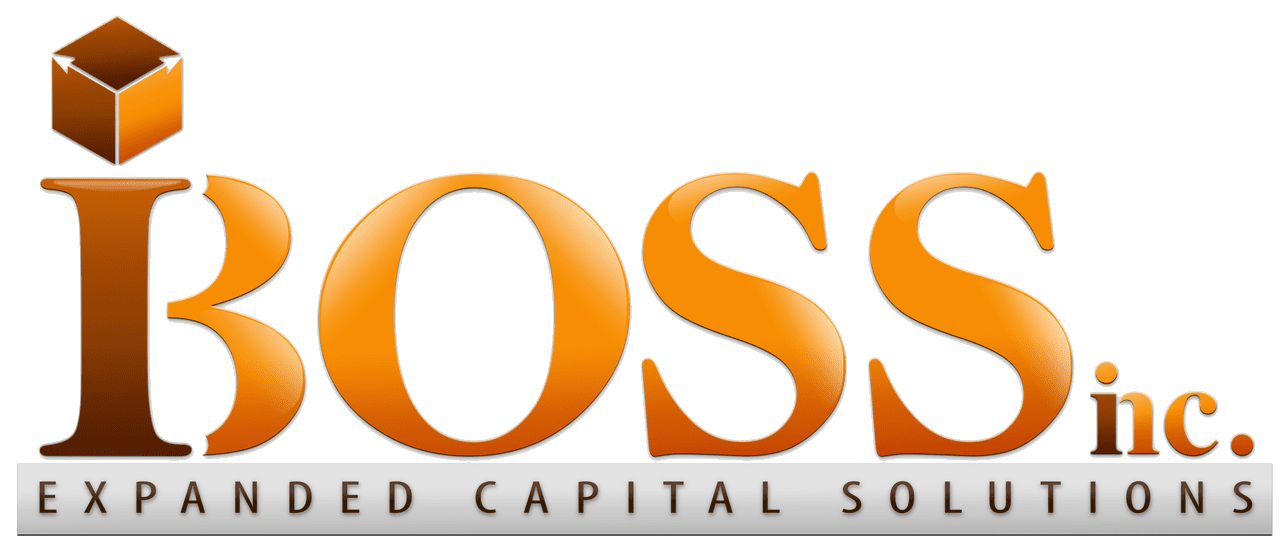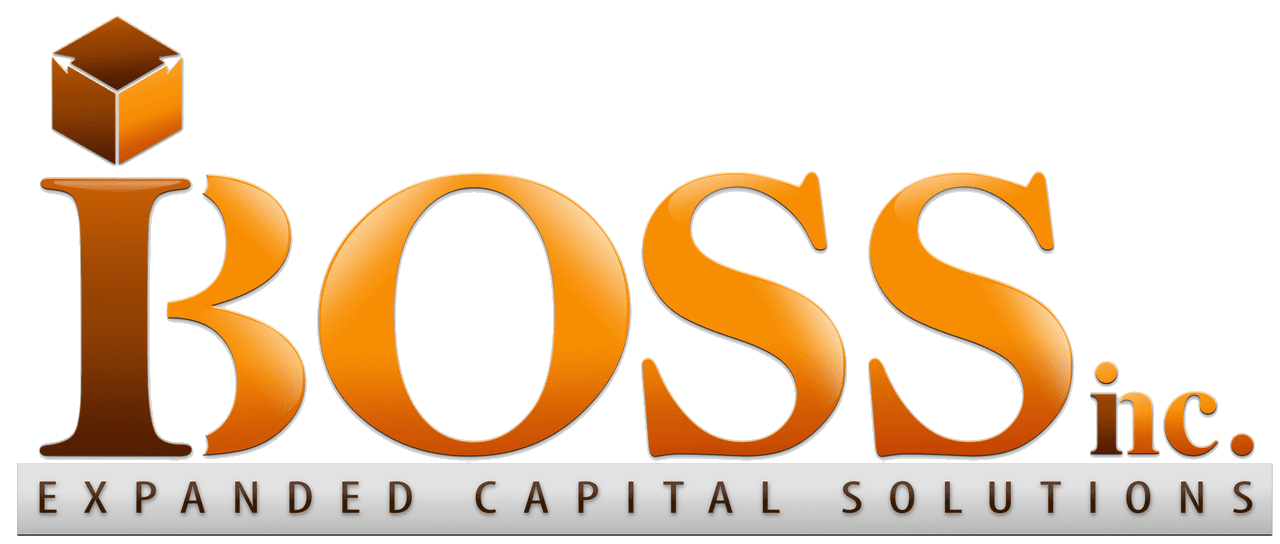05 - The Insider's Guide to Acquiring a Business in Your Field
05 - The Insider's Guide to Acquiring a Business in Your Field
![]() | Disclosure and Transparency Statement: This article includes AI-generated content; see the complete statement below.
| Disclosure and Transparency Statement: This article includes AI-generated content; see the complete statement below.
Evaluating Industry Opportunities
One of the most crucial first steps for technicians with entrepreneurial aspirations is carefully evaluating industry opportunities before acquiring a business, which means going beyond a surface-level glance at what's available on the market; it requires deeply analyzing the landscape to identify the optimal firm to purchase based on your background, skills, and goals.
Essentially, there are three key phases to guide your opportunity evaluation:
Market Research: Roll up your sleeves and dig into the specifics of your industry of interest—become an expert. For example, say you're an IT technician looking to acquire an IT consulting firm. You'd study recent market trends, emerging technologies, and client needs and pain points, competitive forces, and potential growth areas related to tech consulting services. Through in-depth research, you'd uncover insights like demand for cloud solutions is surging as businesses seek to reduce on-site infrastructure yet maximize flexibility; meanwhile, many smaller legacy IT firms are lagging on cloud adoption.
Opportunity Identification: With thorough research under your belt, target companies aligned with your expertise yet also offering avenues to evolve their offerings and expand the business. Continuing the IT example—after noting the gap between cloud demand and legacy firm capabilities—you discover a 20-person tech consultancy with a solid regional presence but limited cloud migration experience. You have the background to guide the firm into advanced cloud solutions and next-gen service offerings—an excellent acquisition opportunity.
Due Diligence: Now, scrutinize the target company: finances, operations, processes, reputation, client roster, and employee skills. Think of it like a mechanic inspecting every inch and part of a vehicle pre-purchase. You want complete transparency on company health and viability before acquisition. How are revenue and cash flow? What's the leadership structure? How efficient are internal systems? If you take the leap, this data-driven analysis informs your purchase offer and post-acquisition priorities.
In essence, meticulously evaluating industry opportunities levels the playing field between technical and business backgrounds. It empowers you to strategically identify, assess, and acquire a firm at the intersection of current capabilities and future possibilities primed for your entrepreneurial leadership. It transforms the venture from an acquisition to a catalyst, leveraging your technical expertise within a roadmap built for growth and success.
Understanding Market Dynamics
A robust understanding of current and emerging industry dynamics is indispensable when evaluating businesses for acquisition. Without insight into market conditions and future trajectories, making a fully informed investment decision aligned to growth is impossible. Let's explore this further.
Consider the HVAC industry. An accelerating market-wide shift towards eco-friendly building practices drives surging demand for energy-efficient and sustainable climate control systems. You'd uncover rapid growth in green HVAC technology adoption by immersing yourself in HVAC trade publications, analyst reports, and manufacturers' product roadmaps. Competitors are rushing to keep pace with client demand through new service offerings in this niche. It's essential to grasp the industry's "green-ification" to identify acquisition targets well-positioned to capitalize on this trend.
The automotive repair landscape faces its own dynamic transformation with the rise of electric vehicles (EVs). As a potential investor, observing how incumbent repair shops struggle to adapt to EV servicing is telling, far beyond traditional automotive maintenance, from charging infrastructure and battery expertise to software diagnostics and parts availability. The market is bifurcating between shops that modernize via EV capabilities and those rendered obsolete.
In summary, an insightful interpretation of market dynamics, both current conditions and future trajectories, allows you to pursue acquisitions strategically aligned to growth drivers, not vestiges of the past, which gives you an informed vantage to act on prescient trends before they manifest at scale, not react once market forces have already disrupted. With this forward-looking perspective, you pick winners poised to lead industry growth curves, not laggards struggling to keep pace.
Leveraging Baby Boomer Retirement
An often overlooked yet highly promising avenue for business acquisition lies in tapping into the massive wave of retiring Baby Boomer entrepreneurs lacking succession plans. With millions of business owners nearing retirement age and failing to designate successors internally, this presents prime opportunities for skilled technicians to step in and take the reins strategically.
Let's explore a common scenario. Take a specialized machining shop owned by a veteran Baby Boomer machinist. After decades of building a thriving regional shop, they plan to retire fully, yet have no viable internal successor to pass the business to when they exit. This story repeats itself frequently across sectors as first-generation business owners approach retirement unprepared for the transition.
For an aspiring technician-entrepreneur in machining, news of this impending small business vacancy nearby creates a unique opening. You now hold the chance to acquire and lead an established brand and customer base ripe for fresh thinking and expanding service offerings—the ideal foundation to erect your entrepreneurial venture atop.
In summary, synchronizing your technical expertise and leadership ambitions to businesses facing retirement-triggered turnover holds manifold advantages. You at once secure an enterprise with existing credibility while positioning yourself to inject modernization, expansion, and the next chapter of growth and success. It's the ultimate win-win—the retiring founder sees their life's work live on while you gain a springboard to propel your own entrepreneurial trajectory. When overlooking acquisition opportunities, don't neglect the massive subset of aging business owners departing without succession plans in place.

Navigating Financial Readiness and Due Diligence: More Than Just Capital
When acquiring a business, financial readiness involves much more than securing capital. Thorough financial due diligence is imperative to evaluate viability and map post-acquisition priorities. Let's break this down further.
Say you're assessing a boutique digital marketing agency as a prospective buy. Firstly, meticulously analyze its financial statements - historical performance, current health metrics, revenue streams, cost structure, and key client details. Understanding the agency's full financial profile is mandatory.
For revenues - scrutinize stability. Are cash flows consistent and recurring via retainer contracts or fluctuating project-based? Examine significant cost drivers. Do expenditures align efficiently with the operating model, or are there bloat and cuts ahead?
Now, drill into client retention rates, making or breaking agencies, especially boutiques, reliant on a handful of accounts. High retention signals happy customers and steady revenues. Low retention suggests dissatisfaction jeopardizing income streams. Thus, assessing retention metrics helps you accurately value this asset and craft a sound post-acquisition game plan if you proceed.
Financial readiness and due diligence for acquisitions go beyond capital capacity. They mandate rigorous analysis of the target's complete economic history and metrics. Together, these indicate genuine viability, valuation, and operational priorities needed to spur growth post-purchase, which prevents investing in a venture poised to drain rather than deliver value from day one under your helm.
Assessing Personal and Professional Fit
Among the many steps navigating technicians' transition into entrepreneurship, assessing alignment between personal values, professional competencies, and the acquired business remains paramount yet overlooked. This examination goes beyond a perfunctory checklist; when done sincerely, it cements motivational harmony, spurring company growth and personal fulfillment.
Consider a renewable energy technician seeking their first business acquisition. While a struggling fossil fuel provider may offer financial turnaround potential, personally and professionally, this clashes against their passion for sustainability and clean energy expertise. Conversely, acquiring a fledgling solar firm or innovative wind tech startup synchronizes perfectly with their background and convictions.
It's about more than just skills meeting opportunity. When your business ventures resonate with deeply held values alongside hard-earned technical abilities, it produces profound fulfillment and purpose. Work becomes more meaningful, which unlocks higher levels of engagement and excellence. Knowledge, beliefs, and objectives fuse into a motivational torch, fueling decisions and direction.
In the end, harmony between the personal and professional realms often separates companies that merely stay afloat from those poised to thrive. Holding doubly true for technical founders embarking on their first entrepreneurial endeavor. Ensuring acquired ventures align with personal passions and professional competencies makes all the difference in charting a course built upon motivational unity rather than internal conflict.
Analyzing Skills and Experience
Performing honest self-evaluation of capabilities beyond technical skills is imperative before endeavoring on a business acquisition journey. Consider a seasoned graphic designer contemplating purchasing a digital marketing agency. While confident in creative abilities, bluntly assess weaker areas - can you strategically guide marketing campaigns? Effectively manage clients? Lead teams? Identifying gaps separating technical prowess from holistic leadership is essential.
Additionally, aligning acquisition choices with personal values and aspirations fuels success. Take Jane, a software developer passionate about environmental sustainability. For her, acquiring an eco-friendly tech firm does more than utilize expertise - it lets professional goals and principles coalesce, magnifying motivation and fulfillment.
Finally, reflect carefully on lifestyle impacts. An IT consultant becoming an IT services business owner signifies a monumental shift - from employee to employer. Work-life balance, stress management, and decision bandwidth transform dramatically when the buck stops with you. Make sure to understand these changes when assessing ventures. The one enabling maintained personal fulfillment wins despite potentially higher financial rewards elsewhere.
Approach potential acquisitions through three crucial lenses - capabilities assessment, values alignment, and lifestyle ramifications. This holistic perspective anchors your decision in what matters most, personally and professionally, setting you up to thrive, not just survive.
Understanding Industry Nuances
When entering a new sector through acquisition, methodically acquaint yourself with industry intricacies and norms. Restaurants, law firms, auto shops - each world operates by unique codes, challenges, and customer expectations. As an outsider, recognize deficiencies in grasping these dynamics. Lean on staff and advisors to fill knowledge gaps so you lead effectively from day one.
Additionally, evaluate cultural compatibility with the target acquisition. An open, collaborative leader acquiring a hierarchical organization risks demotivation and friction. Ensure your leadership approach aligns rather than clashes with company culture.
In essence, prep for acquisition through dual assessments of industry specifics, where objective analysis reveals blindspots that managers within the field fill seamlessly. Second, cultural fit prevents scenarios where contrasting internal values and dynamics undermine morale and progress.
Supplementing technical skills with immersion into sector-specific trends and leadership models allows for smooth assumption of the helm. Forward progress flows from synergy between existing company strengths and infusion of fresh perspectives - not jarring imposition of misaligned cultural approaches. Lead through melding insights from within and beyond the organization.

Financial Planning and Funding Options
Navigating the financial landscape is imperative for technicians transitioning to entrepreneurship via acquisition. Mastery spans both securing purchase capital and optimizing post-deal operating efficiency.
First, objectively assess readiness. For an engineer eyeing an engineering consultancy, bluntly examine personal capital and financing capacity before moving ahead. Analyze savings and assets, tally debts and liabilities, and evaluate access to credit. This complete financial picture clarifies readiness.
With a baseline established, explore creative acquisition financing, including SBA small business loans or seller financing, potentially covering total purchase costs over longer-term arrangements. For more significant deals, consider leveraged buyouts utilizing the acquired company's assets to secure loans. When upfront capital is lacking, earn-outs allow initial payment, supplemented by performance-based installments over time.
Post-close, shift focus to maximizing operational efficiency, the lifeblood of profitability and growth, which may involve upgrading technology, streamlining processes, curating high-margin service lines, or accelerating customer acquisition. Investing in advanced equipment for a dentist acquiring a practice could unlock greater patient volume and revenues.
Technical founders seeking successful acquisition must demonstrate financial savvy in securing purchase capital and optimizing the operating venture. Consider creative alternatives to self-funding while fixing deficiencies impeding performance. Capital is merely step one - building and growing a sustainable company is the ultimate challenge.
Building a Strong Network and Support System
For technical founders, cultivating a diverse support network is instrumental in charting a practical entrepreneurial course, which comprises more than emotional reassurance – it requires actively developing connections to practical wisdom and resources.
Start by establishing industry ties. Engage suppliers, practitioners, and trade groups to soak up on-the-ground insights around customer pain points, emerging technologies, and potential pitfalls, gaining perspectives illuminating market nuances unavailable through distant analysis.
Seek out mentorship from those further along similar journeys. Their lived experience can help you anticipate challenges ahead and avoid missteps they endured firsthand. Say an aspiring auto shop owner gains invaluable guidance from a veteran shop operator on everything from staffing to parts sourcing.
Additionally, leverage professional communities like trade organizations and online forums. These offer continuing education, best practices content, FAQs libraries, and more. You tap into the collective intelligence of an entire industry. An IT services entrepreneur could accelerate their learning curve tremendously through something like CompTIA membership.
Beyond field-specific connections, gather specialized advisors like legal, HR, and financial to toggle between strategy and execution. And remember, networks increasingly transcend geography in our digital age - industry blogs, podcasts, LinkedIn groups, and more link you to global support.
For location-based businesses, cultivating community connections, from local agencies to neighborhood events, remains pivotal in earning customer trust and loyalty over time.
Embarking on the entrepreneurial path requires a multidimensional support network - field-specific advisors, mentor guidance, professional development, specialized services, digital resources, and local community connections. This ecosystem helps convert unexpected obstacles into navigable challenges.
Transitioning from Employee to Leader
The leap from employee to leader forms a pivotal juncture of the entrepreneurial journey, demanding profound mental, skillset, and responsibility transformations.
First, upgrade strategic thinking beyond a technical specialist's focus. As an engineer, for example, expand capabilities to holistically encompass market positioning, growth planning, team leadership, and more.
Concurrently, cultivate core leadership abilities - decision-making, conflict resolution, inspiration, and team development. A software developer heading a tech startup must evolve technical skills into organization-wide vision and direction-setting.

Operationally, steward the entire business engine - marketing, finance, HR - not just your specialty. Workshops and courses help technicians master areas beyond existing capabilities while identifying knowledge gaps.
Additionally, nurture a positive culture permeating customer interactions, employee morale, and company ethos through your messaging, policies, and lead-by-example conduct. As a new retail store owner, for instance, transmit customer service excellence as a cultural cornerstone from day one.
Manage the leadership transition sensitively- communicate transparently and balance innovation with continuity. For family restaurant acquisition, uphold legacies conveying stability amidst change.
Finally, sustain learning orientation. The industry evolves continuously. As a leader, absorbing developments and nurturing adaptability is imperative to outpace competitors.
Migrating from technician to entrepreneur necessitates elevating both mindsets and competencies to 360-degree leadership. Absorb broader business acumen and hone executive abilities matching the vision you set. The result is an empowering transformation, unlocking new professional horizons brimming with potential.
While demanding, embracing this growth fuels both company success and personal fulfillment. The challenge of leadership offers rewards that technical specialization alone cannot fulfill.
Conclusion
Exploring technicians transitioning towards entrepreneurship, we've charted a course across critical yet fulfilling terrain - from market analysis to leadership mindsets, financial master planning, and risk management.
Core lessons include aligning personal values with venture selection, thus fueling motivation. Building diverse support networks, providing practical wisdom when needed most. Understanding funding options beyond conventional loans. And embracing leadership identity, where empowering teams, setting strategic direction, and stewarding culture differentiate entrepreneurial success.
While demanding, the technical-founder pathway promises profound rewards where analytic skills meet creative business building. Technical expertise converges with strategic direction setting for organizations. Purpose-driven income change fuses with community-focused impact generation.
Use these guideposts to manifest this future for yourself. Let it shape decisions - from opportunity evaluation to due diligence, capital planning, and leadership development. Soon, you'll traverse from specialist to strategist, from individual contributor to inspirational team builder.
When you take this leap, challenges will anchor successes sweeter. Risks will make rewards worthwhile. And you'll look back one day to realize that your technical background didn't limit your business ambitions - it enabled them.
Up Next: "Franchise or Freedom? Choosing Your Path in Business Ownership". Deciding between a franchise and an independent business? Our next article will guide you through this crucial choice. Discover the benefits of a franchise's support and brand power versus the freedom and challenges of an independent venture. Make your next business move with confidence, informed by our insightful analysis. Stay tuned!
Previous Articles In This Series
01 - The Acquisitions Market: Baby Boomers Retiring - A Market Ripe with Opportunities to Partner, Merge, or Buy Businesses from Senior Transitions
02 - Navigating New Horizons: Growth By Acquisition - When Startups Should Consider Buying a Business as a Growth Strategy
03 - The Acquisition Advantage: Scaling Small Businesses - How Small Businesses Can Identify the Right Acquisition Opportunities
04 - The Professional Pivot: From Corporate Executive to Business Owner - Evaluating Business Acquisitions for Professionals Leaving the Corporate World
Disclosure and Transparency Statement:
This article is founded on my industry knowledge and expertise, coupled with the assistance of artificial intelligence (AI) tools. As a committed advocate for small businesses and a pioneering voice in expanded capital solutions, I leverage technologies such as OpenAI, Bard, Bing, Claude, Grammarly, and other aids in my productivity, research, and composition processes interchangeably. This includes writing, editing, refining, or assisting in creativity, brainstorming, or outlining. The core substance of this content is sourced and prompted by my extensive experience and industry acumen of over 30 years. This and other blog posts have been refined to provide clarity and substance in service to the readers' success.




